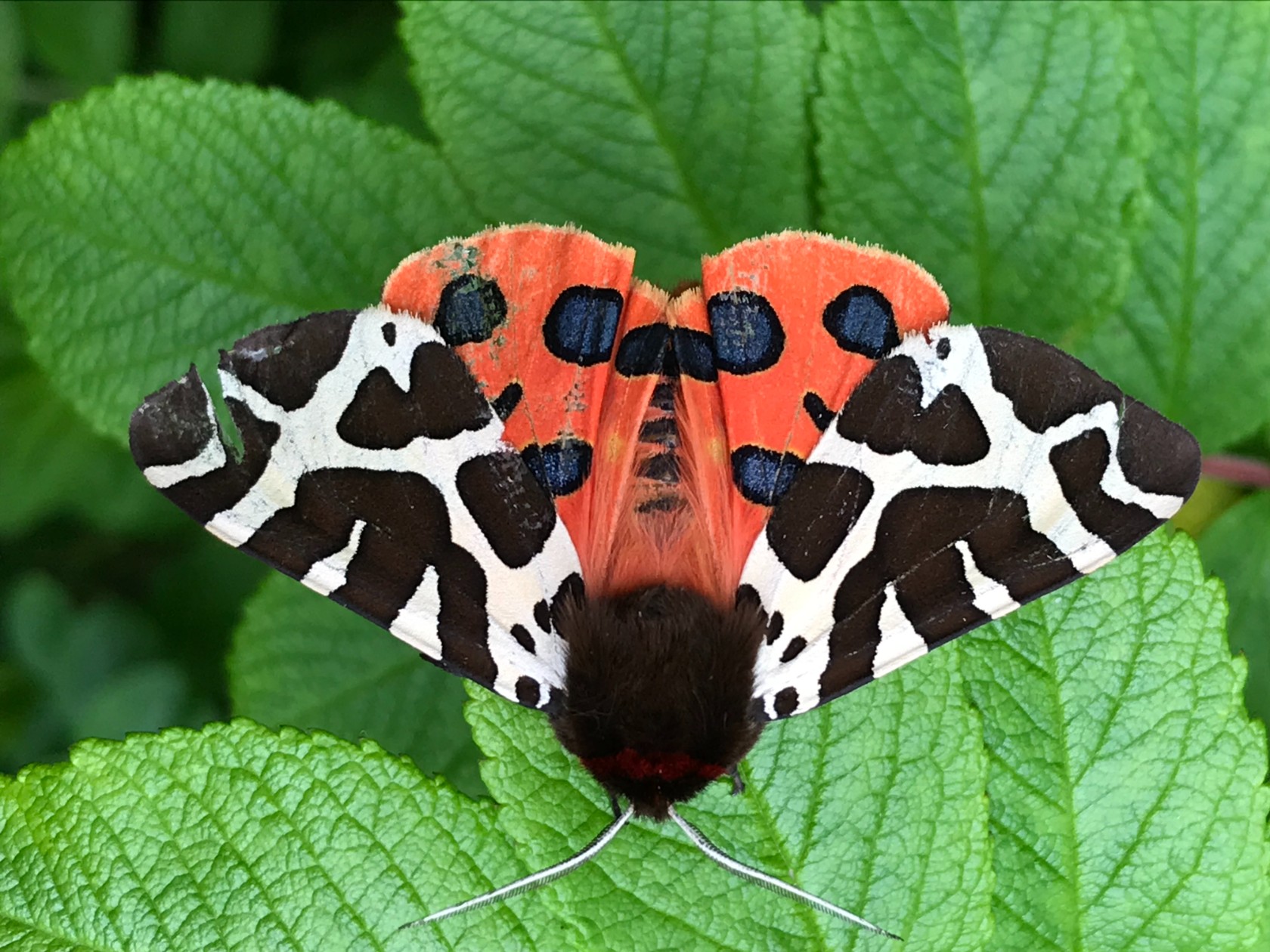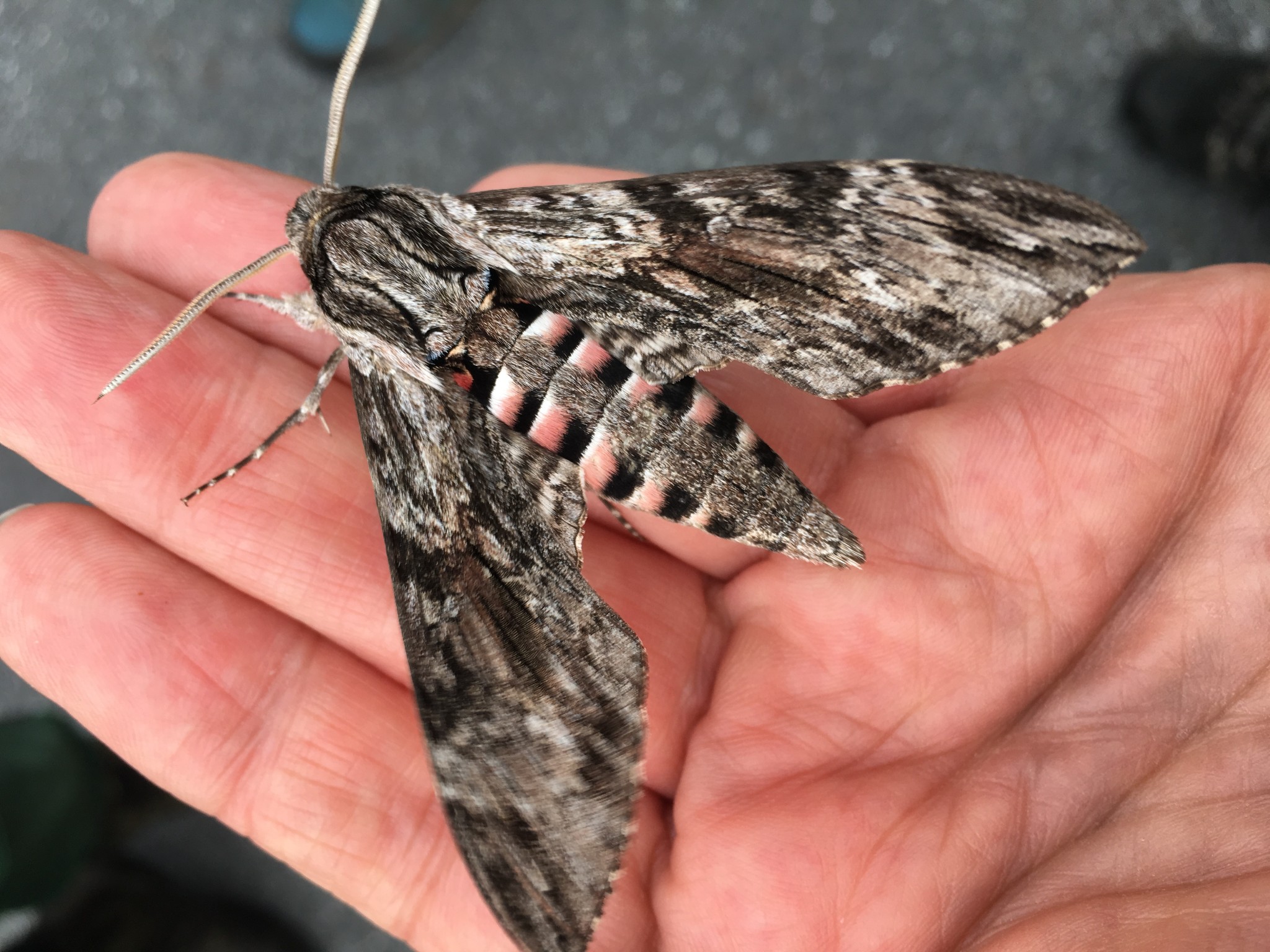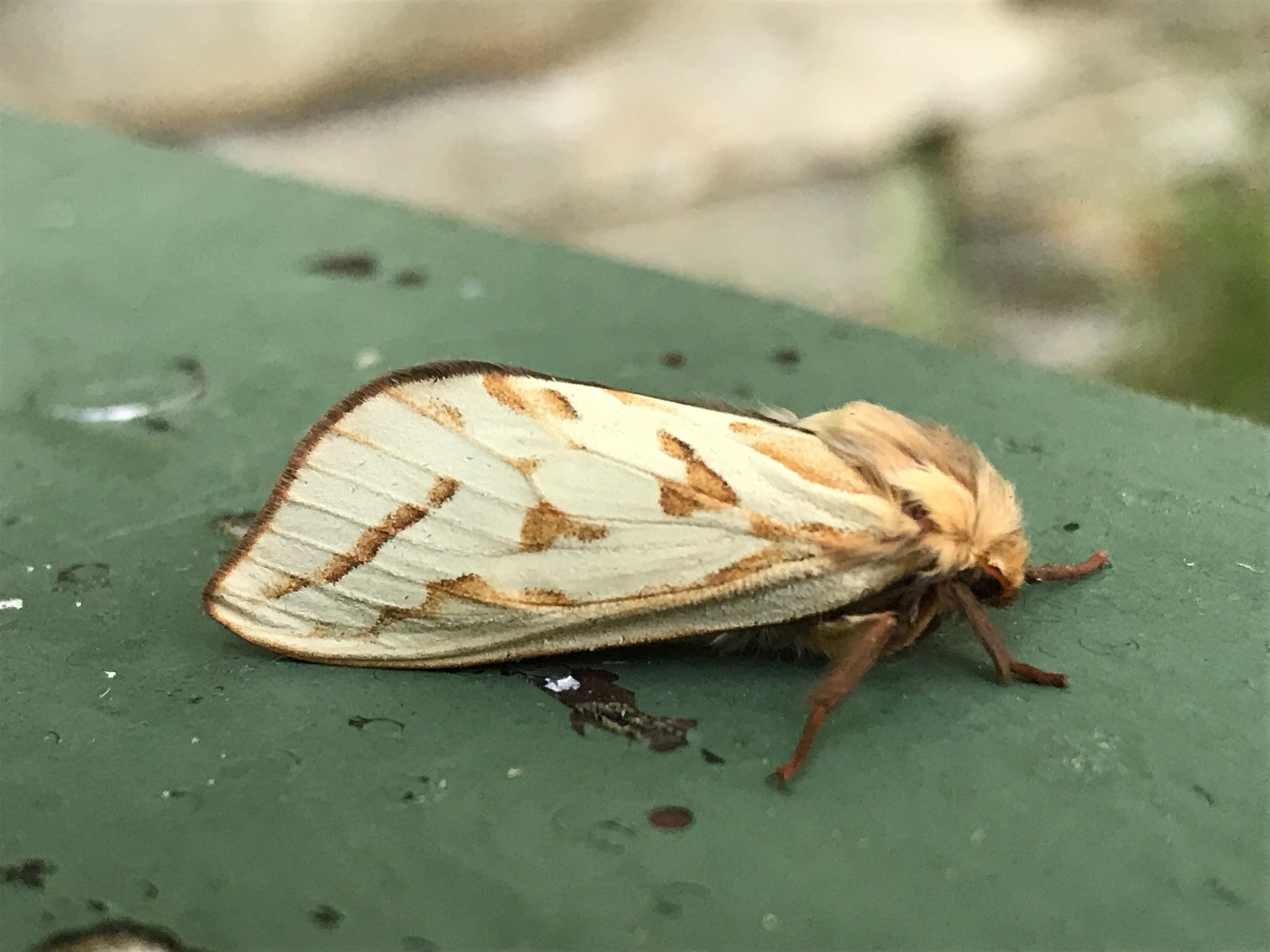National Moth Night
Published: 19 May 2022
Keep your eyes open - as it's National Moth Night! This event organised by Butterfly Conservation, the UK Centre for Ecology and Hydrology and Atropos is an annual celebration of moth recording in the UK. It runs from May 19th-21st and everyone is encouraged to record any moths they see.

The large and colourful Garden Carpet is a rare visitor to Shetland
Moths are stunning creatures. Some are wonderfully colourful – a sudden splash of colour frightens-off would be predators; others very subtle (I guess some would say dull) desperate to merge with their surroundings to avoid getting eaten. Despite their reputation only a handful of species eat clothes! Moths are important indicators of the health of our environment. They play an important role in ecosystems, as herbivores, pollinators and as prey for a wide range of other wildlife. And the news is not good. Many species are suffering alarming declines across the country and studies have shown that the overall number of moths has decreased by 28% since 1968. Over 60 species became extinct here in the 20th century. The reasons for these declines can be complex but habitat loss and the intensification of agriculture are foremost among them.

one of the largest moths we are likely to see in the islands.
Mothing has really taken off in Shetland in the last few years and there are at least a dozen folk now operating a trap on a regular basis. Many of our moths are resident but we also get a lot of migrants that add extra excitement to catches. Over 350 species have now been recorded in the islands with new species being added to the list every year. Insects are among the first organisms to respond to climate change and several species have moved north and colonised the islands in recent years, we can expect more. Others have undoubtedly arrived as eggs or larvae on imported plants and some of these have colonised the islands successfully.

during the short mid-summer nights
Late May is not the best time for moths in the islands. The nights are very short and the weather still relatively cold. Most of our moths have yet to emerge and double figures would represent an exceptional night’s catch just now. So, rather than organising an event as part of National Moth Night, Shetland Amenity Trust and the Shetland Community Wildlife Group have organised a mothfest on August 8th. Keep an eye open for more details of this event which will be released soon. Meantime though, we at SAT would be very happy to receive any of your observations as part of National Moth Night. If you’re not sure what the moth is then take a photo and send it to us and we’ll try and identify it for you.
Email: info@shetlandamenity.org
Paul Harvey, Shetland Amenity Trust, Natural Heritage Project Officer

